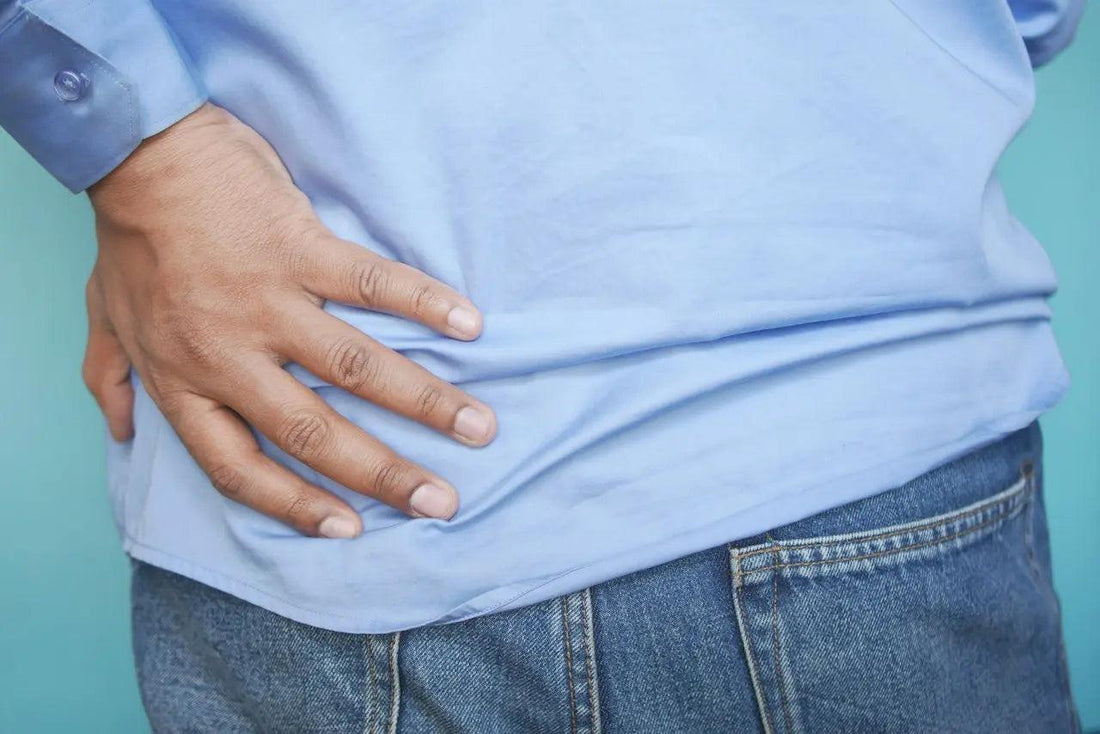
Walking Comfortably Again: Managing Hip Joint Pain
Share
Hip pain is sweeping across America. 30%-40% of adults who play sports experience chronic hip pain. Hip pain is also prevalent amongst older people, with 12%-15% of adults over 60 experiencing it.
Chronic hip discomfort can make walking extremely difficult, but it is possible to regain your mobility and manage your pain. The key is to diagnose the cause of your hip joint pain and find effective treatments, including all-natural supplements. Here is how you should manage your joint pain.

Understand the Causes of Hip Joint Pain
You can manage your hip joint pain only if you figure out the source of your hip problem. You can get a formal diagnosis by meeting with your doctor and describing your symptoms, though you should research the potential causes of hip pain.
Muscles and Ligaments
Muscle strains occur when you stretch your muscles to the point that the fibers tear. They can occur after exercise, lifting heavy weights, or turning over in your sleep. If your hip pain feels sharp and gets worse when you walk or move around, you may have a strain.
You may experience many types of strains that can cause hip pain. Your hip flexor muscles connect your back and hip together. If you experience discomfort and stiffness while moving your leg toward your chest, you may have a hip flexor strain. Some people also experience pain in their upper leg and tugging sensations in their thighs as they walk.
Many people confuse muscle strains with sprains. Sprains affect your ligaments, which are bands of tissue that connect bones and joints together. You can experience a sprain after a fall or participating in sports, especially ones that require you to twist or pivot. Hip sprains can cause back, hip, and leg pain. You may experience swelling or stiffness in your hip and feel tender and weak.
Related: Soothe Your Foot Pain
Tendons
Tendons connect your skeletal muscles to your bones, allowing you to move around. Tendonitis occurs when your tendons are inflamed, swollen, or irritated. You may have tendonitis if your pain is a dull ache in your hip.
Joints
Arthritis is a leading cause of hip joint pain. It occurs when the hip joints become inflamed, sometimes due to an autoimmune response or injury. Many people experience joint pain and stiffness, making walking hard, even at a mild pace.
Toxic synovitis is a common cause of hip pain among children, though adults can experience it. It usually takes place after a viral infection, and it can result in intense pain and limping.
Your hip joints contain small amounts of fluid, helping you move around. If your joints fill up with too much fluid, you may experience hip effusions that can cause mild to severe pain.
Bones
Osteonecrosis occurs when blood stops flowing to your hip joint, though your other joints may not have consistent blood flow. You may feel a dull ache or a throbbing sensation that can spread to your groin.
Osteoporosis weakens bones in your legs and hips, creating brittle and weak bones and joints that are hard to support. You may feel severe and sudden pain in your hip that gets worse when you move around.
A fracture can create sharp pain in your hip and groin and make it impossible to place pressure on your leg. You may also experience bruising and itchiness that gets more uncomfortable as you walk.
Are you looking for long-lasting solutions for your bone pain and strength? Try out pain-fighting CBD products from Triple Crown Organics today.
Nerves
A pinched nerve in your hip can cause sharp hip, groin, and thigh pain. You may also feel a tingling sensation or numbness, even if you apply pressure to your hip. Many people struggle to move after pinching a hip nerve, though your mobility may improve after resting.
Your sciatic nerve runs through your lower back into your legs. If your nerve becomes inflamed or irritated, you may experience mild, moderate, or severe pain in your hips and legs. You may also have a tingling sensation that runs down your legs.
Related: Leg Pain at Night
Perform Hip Exercises
Hip exercises can help with most types of pain and many causes of hip joint pain. After getting a diagnosis, you can talk to a physical therapist and your doctor so you know how exactly to stretch your hips.
If you are experiencing stiffness and immobility, you should try stretching your muscles around your hip joints. A knee lift is an easy exercise to perform. Lie on your back with both legs flat against the floor. While your left leg remains straight, pull your right knee toward your chest and place both hands on it. Hold the position for 10 seconds, then lower your leg to the ground and repeat with your left leg.
Strengthening your hip muscles can support your joints, create an even weight distribution across your back, and relieve pain. You can perform hip extensions for most hip conditions. You need a chair or an object that you can hold onto to support your weight. Stand upright with your legs straight and your feet shoulder-width apart. Hold on to the chair, then lift your left leg backward without bending either knee. Lift your leg as far back as possible, clench your buttocks, and hold the position for five seconds. You should then repeat the stretch at least five times with both legs.
Are you looking for tools that can help you build muscle strength? Talk to the team at Triple Crown Organics, the leading supplier of muscle-building CBD products.
Try Out Massage and Physical Therapy
Massage therapy can soothe tension and promote blood flow to your joints and muscles, relieving your discomfort and improving your mobility. You can use an electrical tool if you don’t want to tire or injure your hands, but a therapist is often better than self-therapy. They have years of experience and training, and you can use them for advice on hip pain.
Deep tissue massages can help with bone, nerve, and blood flow problems. If you have muscle tightness or issues flexing your muscles, you can get a myofascial release. A trigger point massage can allow fresh blood to flow into your hips, easing tightness. Some people respond better to one type of therapy than another, so experiment with different massages and see which works best.
If massages aren’t working, you should meet with a physical therapist. They can give you additional exercises to perform and help you find tools like a walker or cane to help you walk comfortably again.

Consider CBD
A 2021 study of 200 hip pain patients found that 24% have tried CBD to manage pain. CBD can fight inflammation, making it a suitable choice for arthritis, sciatica, and tendonitis. It can also help with sore and stiff muscles, including pain after exercise.
Many people with arthritis use Full Spectrum CBD Pain Cream to manage their symptoms. You can apply small amounts of cream onto your hips and then massage them, bringing blood toward your hips and allowing the cream to penetrate into your joints. If you find applying cream difficult, try Full Spectrum CBD Tincture with Turmeric or CBD Capsules for Sleep.
Related: CBD for Muscle Recovery
